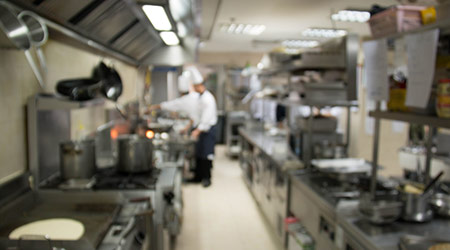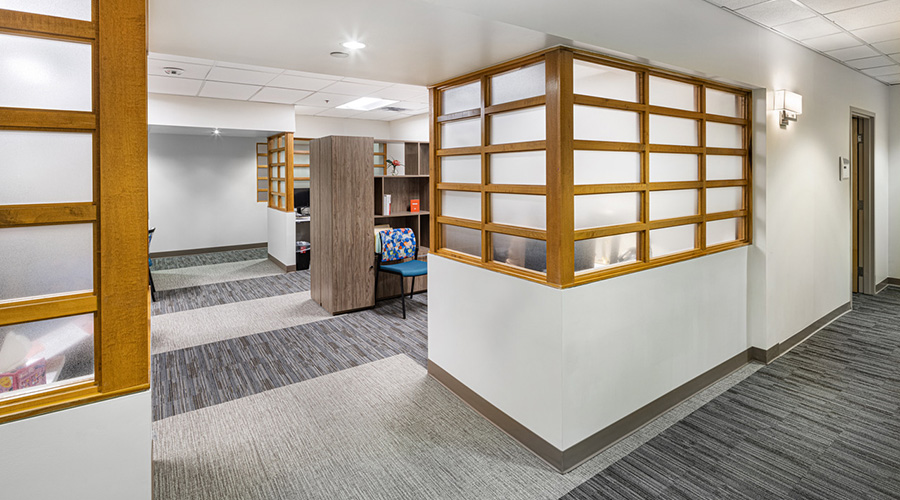From 2011-2015, there were 5,750 fires in healthcare facilities, and 66 percent were caused by cooking equipment. The NFPA has updated codes in long-term care facilities after realizing that prohibition of items in corridors is not feasible in the real world, specifically cooking equipment in or near corridors. So, what do these new codes mean for facilities, and what changes should they be aware of?
Chapter 19.3.2.5.2
The NFPA updated this section to state that, when food warming equipment is in use, it doesn’t require that the area is protected as a hazardous area would. Additionally, in compliance with Section 9.2.3 with compliance from NFPA 96, residential cooking equipment used for food warming or limited cooking does not require protection. Simply put, this section is strictly in regards to “equipment used for food warming or limited cooking”, for example, microwaves, hot plates, toasters.
Chapter 19.3.2.5.3
This updated section relates to cooking facilities that open up to a corridor. When preparing meals in a smoke compartment for 30 people or fewer using residential or commercial cooking equipment, one cooking facility may open to the corridor, assuming certain fire protection regulations are met. One important condition for this is that this portion of the healthcare facility is limited to 30 beds and is separated from other portions of the health care facility by a smoke barrier.
Additionally, it states that the range hood must have the following:
• A minimum of 500 cfm airflow
• Must cover 100 percent of the range cooking surface with grease collecting and clean out capability
• Must have a charcoal filter if it’s not ducted to the exterior
The cooktop or range must comply with the following:
• Protection by a UL300 or UL300A suppression system
• A manual release for discharging the fire protection system
• An interlock to provide shut down to all sources of fuel and power if the suppression system is discharged.
• A switch that is locked or restricted to deactivate the cooktop when not under supervision. This switch must also be on a timer not exceeding 120-minute capacity that will automatically deactivate the cooktop.
Other conditions that need to be met are:
• No solid fuel for cooking is allowed
• No deep-fat frying is permitted
• Portable extinguishers in accordance with NFPA 96 must be located in the kitchen area
• Procedures for the use, inspection, testing, and maintenance of the cooking equipment are in accordance to the manufacturer’s instructions as well as Chapter 11 of NFPA 96
There must also be at least two AC-powered photoelectric smoke detectors installed no closer than 20 feet from the cooking equipment. These smoke detectors have to be interconnected, equipped with a silence feature, and in accordance with NFPA 72. Finally, the smoke compartment must be protected throughout by a supervised and approved automatic sprinkler system.
Chapter 19.3.2.5.4
The last update may look familiar — it’s similar wording as Chapter 19.3.2.5.3. When preparing meals for 30 or fewer people within a smoke compartment, cooking equipment is allowed, as long as the cooking facility is separated from the corridor by partitions. The space containing the cooking equipment must not be a sleeping room. It also has to comply with Chapter 19.3.2.5.3’s fire protection regulations with the exception of having at least two smoke detectors.
Together, Chapter 18/19.3.2.5.3 and Chapter 18/19.3.2.5.3 state that within a smoke compartment, multiple cooking facilities may be used to prepare meals for 30 people or less. But, only one cooking facility in the smoke compartment can open to the corridor.
These updated codes and regulations can be confusing to maneuver but are essential to the safety of long-term care facilities and its patients. Are your facilities compliant?
Billy Findley is vice president of general products for Koorsen.

 Joint Commission Standards: What Updates Matter Most?
Joint Commission Standards: What Updates Matter Most? Swinerton Completes Construction at Atlanta's Grady Hospital
Swinerton Completes Construction at Atlanta's Grady Hospital NY Governor Hochul Announces $300M in Funds for IT and Cybersecurity
NY Governor Hochul Announces $300M in Funds for IT and Cybersecurity Healthcare Is the New Retail
Healthcare Is the New Retail Bridgeway Behavioral Health Services Launches Campaign to Renovate Health Center
Bridgeway Behavioral Health Services Launches Campaign to Renovate Health Center